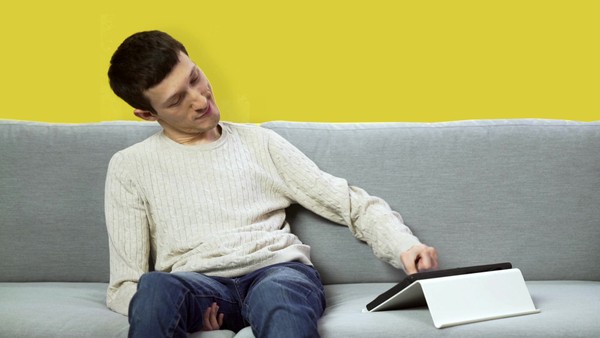Innovation > Innovation
THISABLES
McCANN , Tel Aviv / IKEA / 2019
Awards:

Overview
Credits
Overview
Why is this work relevant for Innovation?
With 13 open-source 3D-printed add-ons we set out to change the way millions of people with disabilities are living their daily lives - in their own home. Introducing IKEA ThisAbles: revolutionizing home furniture for people with special needs - in what turned out to be the biggest inclusive worldwide operation IKEA has ever done.
Background
1 in 10 people in the world suffer from serious disabilities and struggle everyday to accomplish the very basic activities in their own home. Things that most of us take for granted: turning on the light, getting up from bed. It is in their own home where people with disabilities feel neglected the most. Surrounded by clunky, unpleasant and mostly expensive furniture, crying: “Disable!” while all they want is to enjoy the same furniture as everybody else does.
So if IKEA’s mission is “creating a better everyday life for the many”, we knew that we had do better. We must become the first brand to spark a change: bridging the gap between IKEA’s products and people with disabilities.
Describe the idea
By listening to the insights coming from the community we have found out what people with disability truly want – to be part of the mainstream, not singled-out as being different. They wanted to enjoy what the same things everyone else did, including furniture.
We understood that sometimes, just a simple (yet smart) tweak in the product could make the whole difference. So instead of inventing a whole new line of products - we decided to hack our designs by using scalable, affordable and innovative technology and created 13 open-source, 3D-printed add-ons, that make our most iconic furniture finally accessible for people with disabilities. Free to download, 3d print and use, for anyone, anywhere, anytime.
Each add-on sought out to solve a different accessibility issue in an original way: Sofa elevating-legs for easier ascend, lamp button-enlargement, super-zipper for pillow-cases and more.
What were the key dates in the development process?
12 July 2018 - Kickoff meeting: IKEA, McCANN & the non-profit organizations specializing in disabilities: Milbat & Accessibility Israel
6 September 2018 - Tour and exploration of the IKEA store in Netanya with the entire team. The mission: choosing the products to be hacked.
20 September 2018 - The start of the developing process by Milbat alongside a weekly team meeting.
23 September - 30 September - We ran the hackathon, hosted with our target audience turned advisors, consulting with product engineers, accessibility experts, psychologists, and IKEA’S designers
15 October - 20 October - three rounds of tests, modification and improvements based on feedback from our target audience.
3 November - Creating our open-source models and 3D print prototypes with leading 3D printing engineers.
8 November - verification process: we sent our models across the globe to make sure they could be printed properly.
12 December: Buying ThisAbles.com domain and constructing our new website - that showcases and explains each and every add-on, simply and easily.
10 March 2019 - The launch of the first-of-it’s-kind accessible space in IKEA store in Netanya by a press conference.
Describe the innovation/technology
Partnering with the leading non-profit MILBAT and Access Israel, during a one-week hackathon, hosting product engineers, accessibility experts, psychologists, IKEA designers and people with disability themselves – we created add-ons that can be used with IKEA’s most iconic products, each solving a different accessibility problem.
The open-source 3D printable models are free to download at the website – you can 3D print it yourself or contact one of the 3D printers listed on the website and wait for it to arrive in the mail. Easily and efficiently, the new add-ons slip on or plug into your chosen furniture - making it much more accessible. A total of 13 designs hack IKEA’s most popular items and are available today - affordable and accessible - to anyone from anywhere. These hacks include items like the EasyHandle, a big, Rubbermaid-looking grip that can be added to the seamless door of a Pax shelf, and the Glass Bumper, a plastic pad that protects the bottom of a glass-doored Billy bookcase from the bump of a wheelchair. From enlarging pads for small lamp buttons, through huge zippers for pillow cases all the way to handles for your curtains - this is only the first stage of our revolution. The future big vision: make easy to use add-ons for all our products.
The project is open-source and continues to grow with the solutions proposed by users themselves, based on specific needs and insights, adding new add-ons every month.
Describe the expectations/outcome
What started in Israel, proved to be a global solution through our online platform: More than 45,000 people from 127 countries visited our website and downloaded the add-ons. We also drove a 1500% traffic increase to the websites of our partners - non-profit accessibility organizations. Finally, the visits to the IKEA website had a 28,5% traffic increase, with 280,000 unique visitors more than last year’s campaign.
More importantly, this proved a viable business opportunity, as the sales of our products supported by the add-ons grew by 37% in volume, while the revenue grew by 33% versus the same period in 2018.
Finally, the global access to IKEA retail footprint and experience turned ThisAbles into the biggest platform for people with disabilities
More Entries from Product Innovation in Innovation
24 items
More Entries from McCANN
24 items

